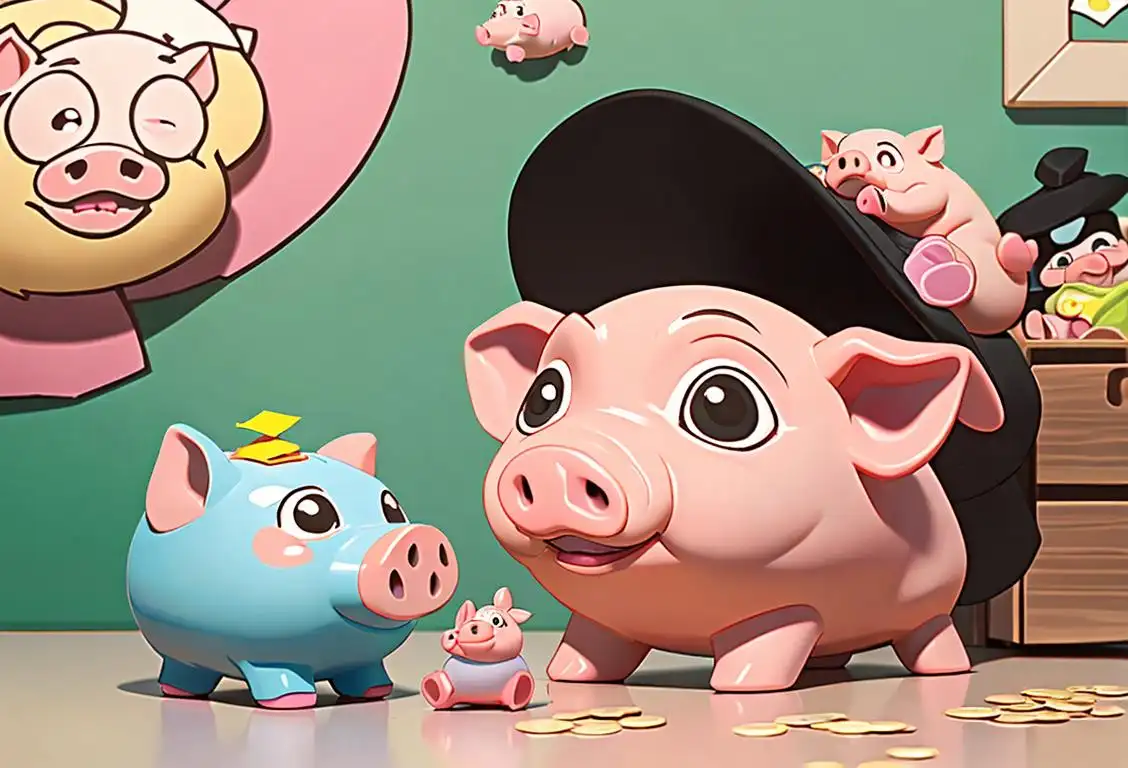National Teach Children To Save Day

Hey there, savers-in-training! Get ready to grab your piggy banks, because it's National Teach Children to Save Day! This delightful day gives us the perfect opportunity to help our little ones learn the importance of saving those hard-earned pennies. So buckle up, strap on your money-saving helmets, and let's dive into this financial adventure!
When is Teach Children To Save Day?
It's national teach children to save day on the 12th April.
The Internet History of National Teach Children to Save Day
Believe it or not, National Teach Children to Save Day was actually born out of a deep desire to empower our youngest generation with essential money-saving skills. With the rise of the internet, parents and educators recognized the need to teach kids about financial responsibility in a fun and engaging way.
The idea of a dedicated day to focus on teaching children to save was sparked by a viral social media campaign. In 2010, a group of parents and financial experts joined forces to spread the message far and wide. They wanted to create an annual event that would inspire kids to become money-savvy, and thus, National Teach Children to Save Day was born!
How to Celebrate National Teach Children to Save Day
Now that you know the backstory, let's dive into the exciting ways you can celebrate this fantastic day:
- Piggy Bank Challenge: Set up a piggy bank challenge at home or in the classroom. Encourage children to save their spare change and see who can fill up their piggy bank the fastest. A little friendly competition never hurt anyone!
- Scavenger Hunt: Plan a savings-themed scavenger hunt around the house or school. Hide clues and treasures that provide kids with valuable financial lessons along the way. Teach them the importance of budgeting, saving, and making wise purchase decisions.
Play Money Games: Gather the kiddos around for a fun-filled game night. Play games like Monopoly, The Game of Life, or Cashflow for Kids. These games not only teach valuable financial lessons but also make learning about money a blast!
History behind the term 'Teach Children To Save'
1973
The Birth of Teach Children to Save
In 1973, the American Bankers Association (ABA) founded the 'Teach Children to Save' program, which aimed to promote financial literacy and teach children the importance of saving money. The program was initially launched as a one-day event held in April, where bankers would visit local schools and provide lessons on saving, budgeting, and other financial concepts. The response from schools and students was overwhelmingly positive, and the program quickly gained popularity across the United States.
1985
Expanding the Teach Children to Save Program
In 1985, the ABA expanded the Teach Children to Save program to become a nation-wide initiative. The program shifted from a one-day event to a month-long celebration in April, encouraging banks, schools, and community organizations to participate by organizing activities and events focused on financial education. This expansion allowed for a greater reach and impact, reaching even more children and helping them develop crucial money management skills.
1997
Financial Literacy Becomes Integral
In 1997, the ABA recognized the growing importance of financial literacy and incorporated it as a key component in the Teach Children to Save program. The focus expanded to not only teaching children about saving money but also educating them about essential financial concepts such as budgeting, investing, and responsible borrowing. By including a broader range of topics, the program aimed to equip children with the knowledge and skills necessary to make informed financial decisions as they grow older.
2002
Interactive Online Resources Introduced
With the rapid advancements in technology, the ABA introduced interactive online resources for the Teach Children to Save program in 2002. These resources included educational games, videos, and interactive lessons that made learning about financial literacy enjoyable and engaging for children. The incorporation of technology allowed the program to adapt to the digital age and reach a wider audience, further enhancing its impact.
2010
Partnerships and Global Outreach
In 2010, the Teach Children to Save program expanded its reach beyond the borders of the United States through partnerships with international organizations and financial institutions. This collaboration allowed the program to be implemented in schools and communities worldwide, promoting financial literacy and supporting efforts to teach children about the importance of saving money on a global scale. The program's impact continues to grow, positively influencing young minds in various countries across the world.
Did you know?
Did you know? The largest piggy bank in the world is over 30 feet tall and can hold more than 1 million dollars in coins! That's a whole lot of savings!Tagged
awareness fun financeFirst identified
24th April 2015Most mentioned on
12th April 2019Total mentions
228Other days
Veterans Day
Happiness Day
Opposite Day
Suicide Prevention Month Day
Bison Day
Mathematics Day
Numeracy Day
Honesty Day
Philanthropy Day
Seniors Day









